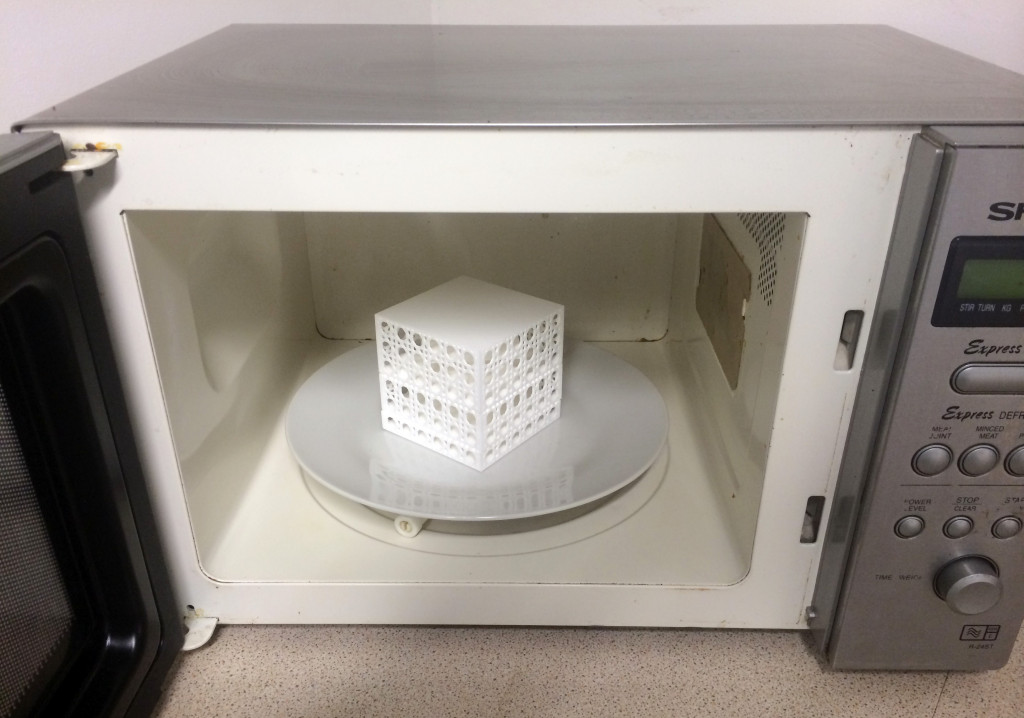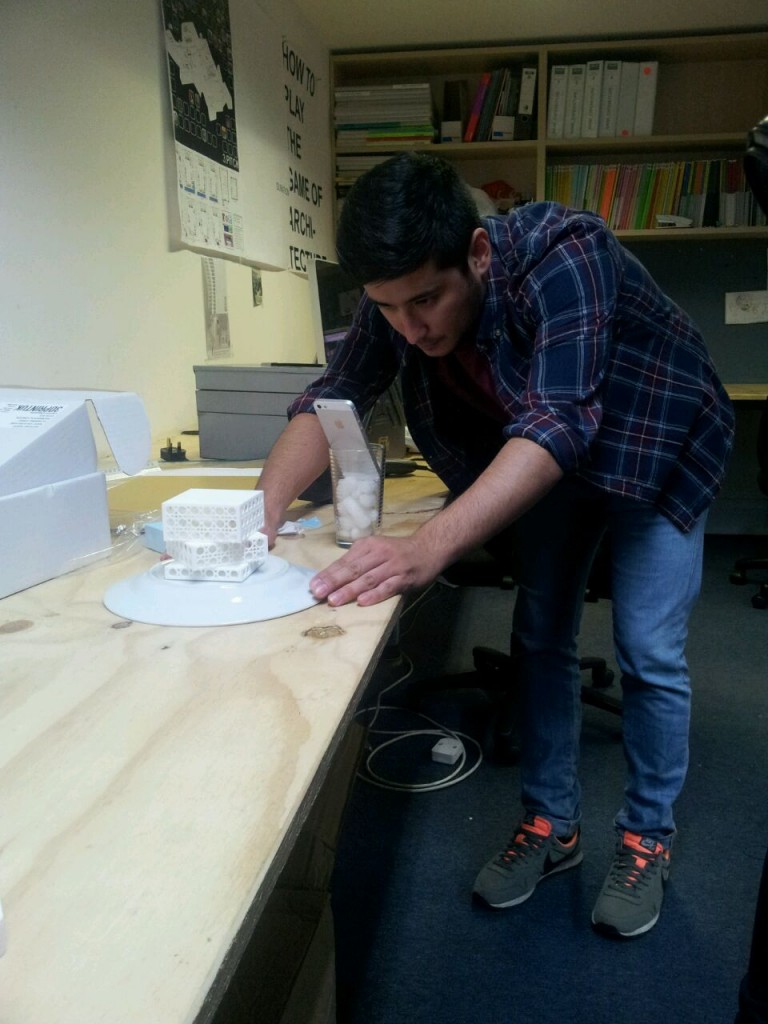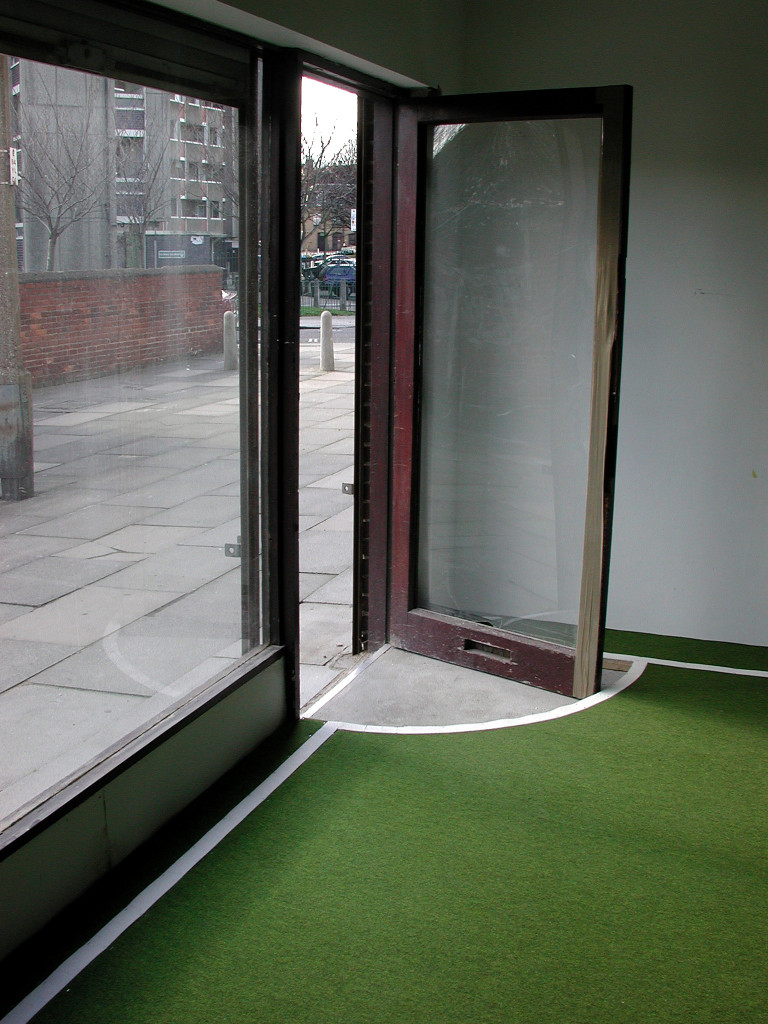000off_Saint-Pierre and Miquelon: A DOT.COM
Our favourite micronation for 2015 is: Saint-Pierre and Miquelon, a tiny island state, 3,800km from France but just 25km from Canada. As such Saint-Pierre and Miquelon is a French collectivité d’outre-mer or COM: it is literally a ‘dot COM’ with the charming domain .pm and the attendant freedom to deploy the internet in ways larger nations cannot. The earliest known micronations dated from the beginning of the 19th century and the advent of the Internet provided the means for people to create many new micronations, whose members are scattered all over the world and interact mostly by electronic means, often calling their nations Nomadic Countries. The differences between such Internet micronations, other kinds of social networking groups, and role playing games are often hard to define…
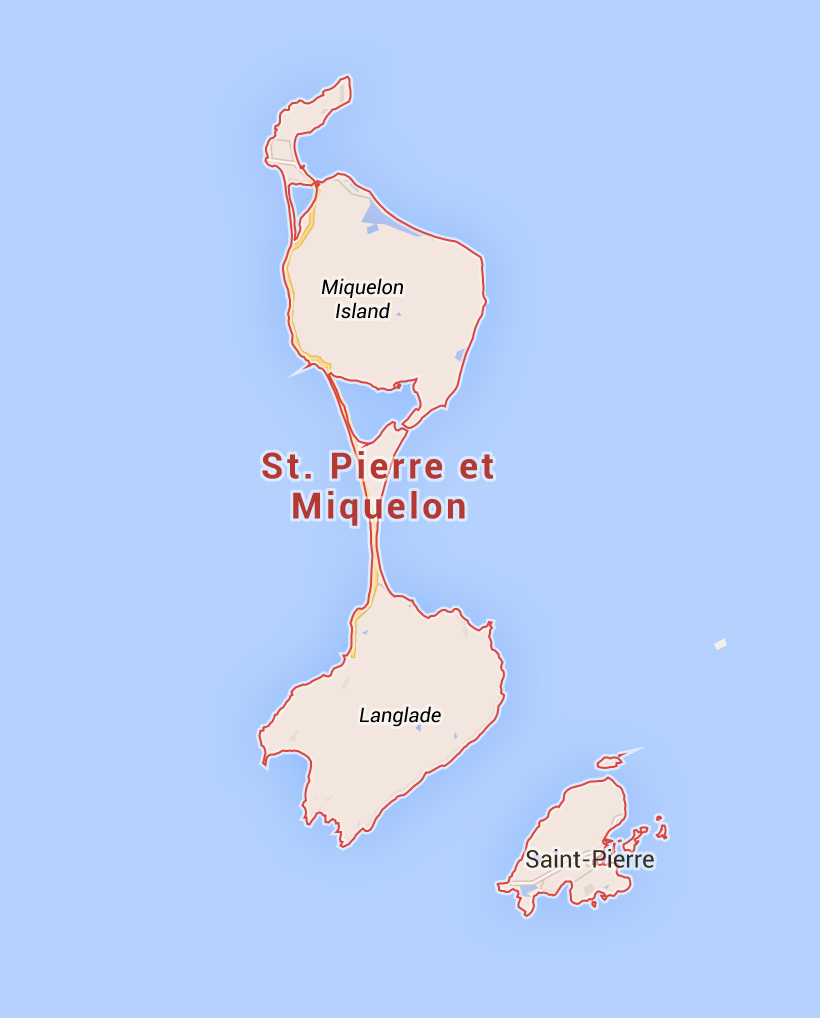


179prs_Life Within Buildings!?
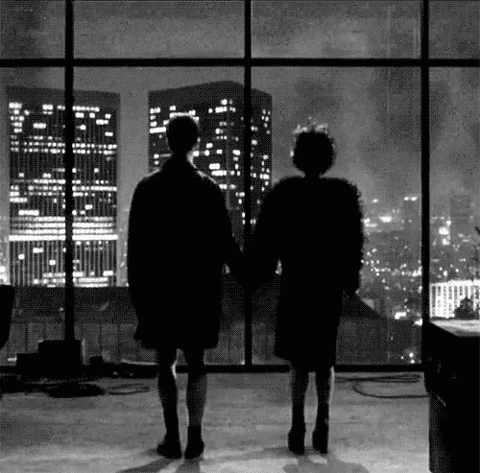 Life Without Buildings!?
Life Without Buildings!? 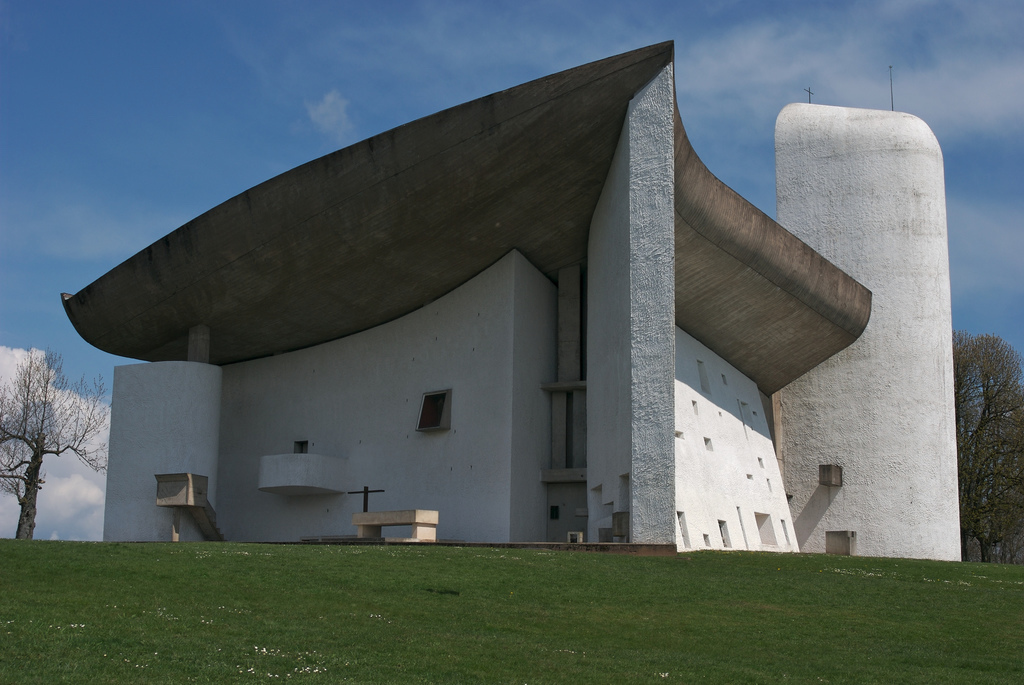 The phrase Life Without Buildings!? appears on all WHAT_architecture communications (emails, drawings…) and in doing so promotes the idea that architecture can be understood not only through walls, floors, roofs and buildings directly but more commonly through mass media such as books, magazines, websites. Following from Beatriz Colomina’s Privacy and Publicity: Architecture and Mass Media, the legitimate expression of contemporary architecture is, today, not building but publication. For example, Le Corbusier’s Ronchamp is universally understood (by architects) not through any site visit to Êpinay-sur-Orge in France but through a mass of publication. So… what is the building in this photograph?
The phrase Life Without Buildings!? appears on all WHAT_architecture communications (emails, drawings…) and in doing so promotes the idea that architecture can be understood not only through walls, floors, roofs and buildings directly but more commonly through mass media such as books, magazines, websites. Following from Beatriz Colomina’s Privacy and Publicity: Architecture and Mass Media, the legitimate expression of contemporary architecture is, today, not building but publication. For example, Le Corbusier’s Ronchamp is universally understood (by architects) not through any site visit to Êpinay-sur-Orge in France but through a mass of publication. So… what is the building in this photograph?
Life Without Buildings!? might be a counter productive strapline for an architectural office that seeks to build. Is WHAT_architecture shooting its clients in the feet? For 2015, WHAT_architecture will now look for: Life Within Buildings!?
So… what is the building in this photograph? The image is of Le Corbusier’s Ronchamp yet has been deliberately published back to front, that is left-to-right reflected…yet ‘how would you know?’ Go to Epinay and have a look!

179prs_NOTES FROM THE BAR
Goethe once said “Music is liquid architecture; Architecture is frozen music.”
Whilst there a long comparative history between music and architecture, these views music/architecture tended to consider the both more as a product (space-time, proportion, harmony etc) than as a process. Yet the way we make music/architecture today seems very similar with a high dependency on digital technologies. Looking at the way electronic music is currently made, there appears to be little frozen or static about the collage techniques, sampling and looping being deployed today. However whilst music is inclusive with references, sources and peers being declared, architecture maintains its mask or originality: few architects name their contemporary peers as being sources of inspiration…

127sho_FORMER SHOREDITCH STATION? A LOAD OF MODERN TOSS!
The scurrilous, global cult comic Modern Toss is the work of Jon Link and Mick Bunnage. As writers, cartoonists, and animators they’ve taken Modern Toss in many different directions- from challenging late night television to cutting edge advertising, and from international design magazines to greeting card racks. This year a Kickstarter campaign for their 10th anniversary book ‘A Decade in the Shithouse’ became the UK’s second biggest ever comic crowdfunding success, exceeding their target within 48 hours of going live. The book ‘A Decade in the Shithouse’ is out now. Their work features regularly in The Guardian, Private Eye magazine and The Sunday Times Style Magazine.
On Tuesday 9th December 2014, Jon and Mick dedicated their Planning Permission comic to the former Shoreditch Station.
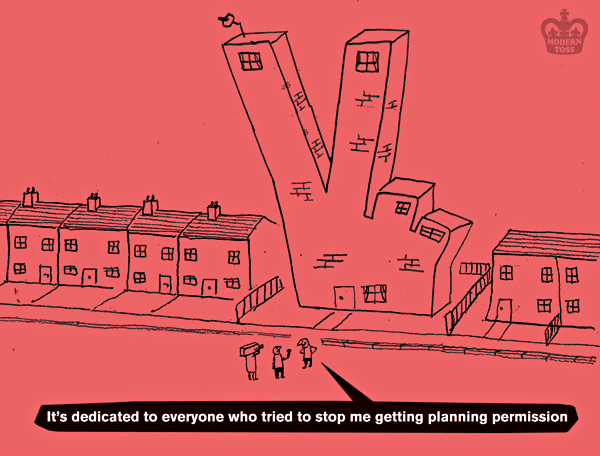
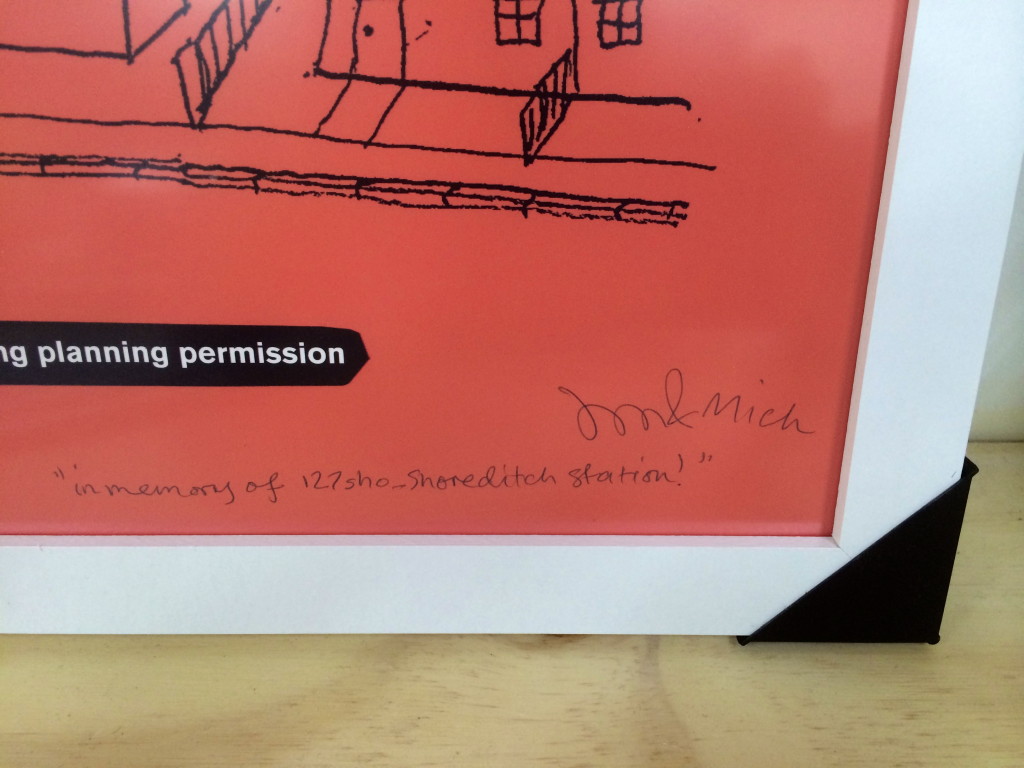



179prs_Rochester Won, Islington Nil
James Kirkup (not to be confused with James Ukip) writes in The Telegraph: “Perhaps the most telling thing about Emily Thornberry’s political demise is the defence she offered for her fatal Twitter picture of Dan Ware’s flag-draped house and a white van: She had “never seen” such a sight before, and thought it “absolutely amazing”, she said. That proclaimed ignorance, arguably, is more culpable than the sneering motives many have imputed to Ms Thornberry. An elected member of the House of Commons finds the habits of the English working class alien to the point of fascination. The Thornberry saga is, initially, a problem for her party, Labour, which is struggling to hold on to voters who drive vans, like football, drink beer and display the cross of St George without embarrassment or irony. But it also says something about our politics as a whole, about the dominance of the middle classes and their values, to the exclusion of those lower down the socio-economic order. In 1997, John Prescott suggested that “We are all middle class now”, but despite an economic shift from manual to intellectual labour, quite a lot of people in the UK can still be described as working class: around 40 per cent in all.”
Emily Thornberry is the Labour MP for Islington South and Finsbury. Her current predicament merely reinforces data produced with The Information Capital that those living in middle class Islington, presumably white van, flag free to Thornberry (presumably not a Gooner), are the unhappiest of citizens of London. Across the pond even Capital America has said through Franklin D. Roosevelt: “Happiness is not in the mere possession of money; it lies in the joy of achievement, in the thrill of creative effort.” In the pursuit of happiness, we need to trade material for social wealth. [+] [+] [+]
This comment was written in an East London tower block.

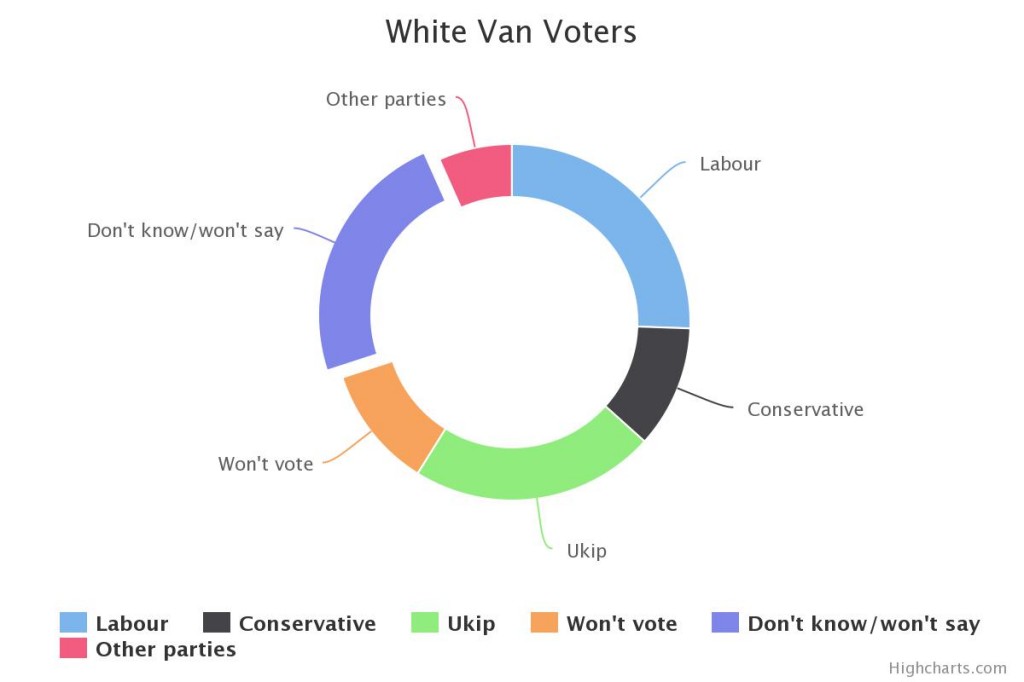
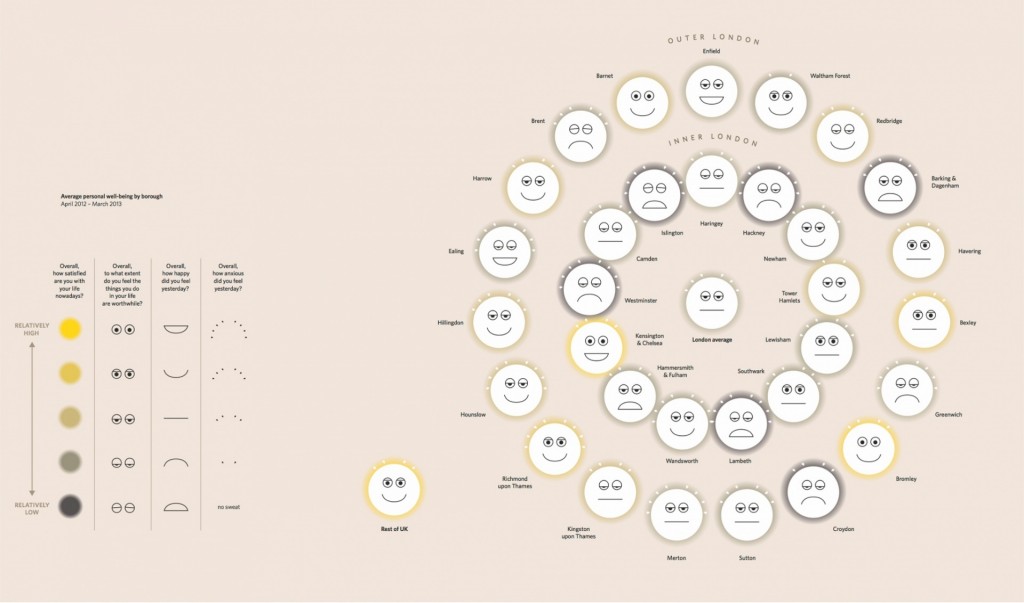




000off_BLIND-FOLDED CRITIQUE / DARK-ITECTURE
blablablarchitecture is talking buildings. This posits listening to architecture over looking at architecture.
‘Blindfold Critique’ is a new way of looking at architecture. Or rather not looking at architecture in that it goes beyond the visual and into the aural. An architect or critic is blindfolded, and taken to an architectural site, where they are asked to give their critique as they are led through the architecture. These critiques have been recorded and edited by Joshua David Lynch and are presented here as audio files (and best listened to through headphones).
Blindfold Critiques where done as part of the 2013 Sydney Architecture Festival and were presented as part of the Expanded Architecture at The Rocks Exhibition. 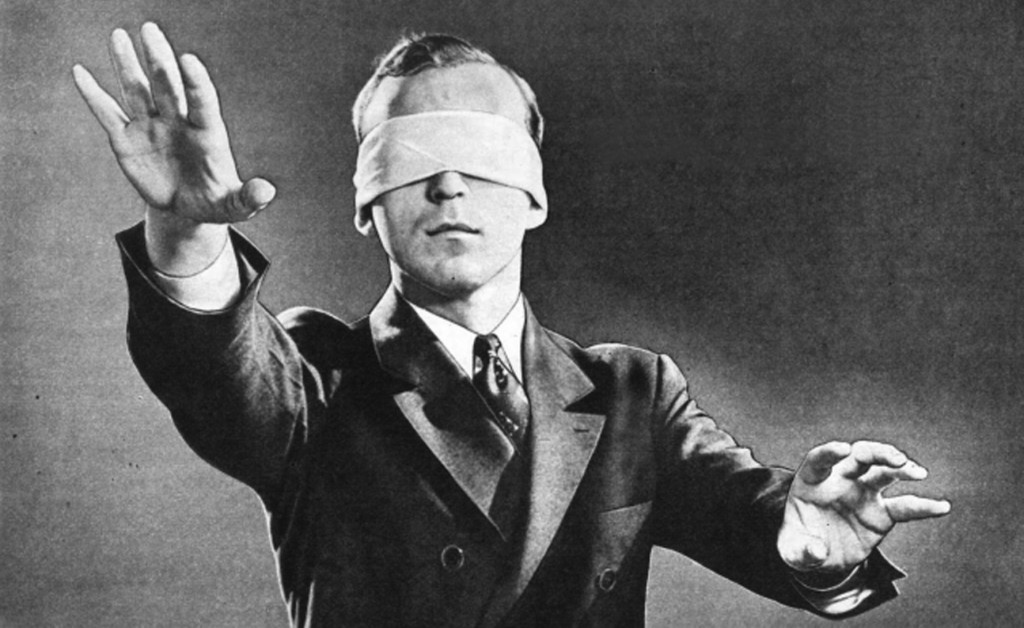 Following on from BlindFold Critiques is this essay Dark-itecture by SOPHIA BANNERT which won the AJ Writing Prize 2014. Architecture doesn’t always engage all of our senses, and tends to rely heavily on sight; appearance rules over experience. Architecture continues to be theorised and practised as an art form of the eye. As a result, it is dominated by considerations such as visual harmony, the divine proportion and the golden ratio. Throughout history, buildings have mostly been about visual seduction to be marvelled at, rather than skilful arrangements of materials and sensations, to create comfortable and inspiring places for everyday use. It’s right that they should be visually stimulating, but let’s not forget our other senses. With the right formula appealing to all of our senses, architecture holds the power to influence your feelings towards a space, your mood, and how you feel about yourself, on a subconscious level. A good architect should be aware of this. Danish architect Steen Eiler Rasmussen said the job of the architect is to ‘remain anonymously in the background, resembling the theatrical producer. He composes the music others will play.’ Composing inspirational and stimulating atmospheres is more effective when an orchestra of senses is involved. This led me to question how rich spaces can be when we take something as predominant as vision out of the equation. A visit to the French restaurant Dans le Noir? provided me with an ensemble of sensory experiences by removing my sense of sight, thus heightening my other senses. The restaurant is unique in the fact that the waiters are visually impaired. The guest is served in complete darkness which reignites one’s sensory and spatial awareness. For once, the blind can act as your eyes, guiding you through the (step-free) experience. The digital revolution makes it difficult to pay attention to the present moment. Therefore, no electronic devices are allowed in, which could serve as distractions. My initial reaction was one of disorientation and unease; deprivation of sight can be frightening. Our eyes are responsible for 80 per cent of the information our brain receives. This makes it the most vital sensory input of the human body. Take that away and the brain is forced to rely on its other senses. Sound is the second most important sense and without sight I was profoundly aware of the acoustics: melodic jazz in the background, mixed with conversational murmurings. Carpet beneath my feet, I reached my hand out and touched a wall which was divided, the top half seemed to have a material covering, and halfway down I felt what I thought must have been heavy wallpaper. The table cloth felt like linen, and I sat in a leathery chair. The room seemed intimate and private, with few other people. Surprisingly the room actually served 60 people. How interesting that when sound is muted and sight removed, one’s spatial awareness can be so wrong. During the meal, I become acutely more aware of the way I was using my voice in conversation. (How do you convey a smile in the dark?) Pitch, speed, volume and tone of voice were suddenly crucial for communication. (Nodding my head in agreement was a wasted gesture – yet I still found myself doing it.) Conversation became an art once more and I felt it was more meaningful. I felt at ease and confident. Visual limitations became liberating. Being became much simpler. I entered a space devoid of vanity; shyness conquered. In this room sensory perception was magnified and, with the removal of sight, style became meaningless. Juhani Pallasmaa once said: ‘Architecture is a slow and silent background phenomenon that frames human experience and gives it specific horizons of meaning. This silent but perpetual presence is the special monumental power of the art of architecture.’ If architects were blind, spaces would be more ergonomic and logical; design of the human experience would be crucial. The architecture here is the feeling created. The light scent of food increased my appetite and anticipation of what I was about to eat. Odours are chemicals which powerfully affect our brain function; influencing mood shifts and triggering involuntary memories and feelings. The smell of good food triggered, for me, associations with homely comfortable memories, which furthered the relaxed ambience. My entire perception of time disappeared whilst I was in the room. Can a space alter the way time is perceived? Neuroscientist David Eagleman states that when we hear enjoyable sounds and experience new sensations, the greater attention we pay leads to perception of a longer period of time. ‘When familiar information is processed, this doesn’t take much time at all. New information however, is a bit slower to process and makes time feel elongated.’ The concept of a space altering our perception of time is thought provoking. We live such busy lives; it would be wonderful to be able to create the illusion of slowing time down to enjoy the present. Without romanticising being blind, my visit to Dans le Noir? raised my awareness of the importance of our environments, and the way in which we perceive them, in a way no other place could, by allowing one’s other senses to fully engage in the environment – without the overriding reliability on sight. The genius-loci or spirit of place is easier to feel than see. Our over-connected environments are becoming sensory impoverished and lack inspirational non-visual stimuli. Modern digital culture can conflict with meaningful human communication. Can we, as architects, address this isolation by creating spaces in which people can reconnect on a more intimate level? To open a restaurant in which one dines in complete darkness was a courageous act, but in doing so they have provided the diner with a banquet of sensory stimuli. It’s an irony that if a sense is taken away, one can become more sensually aware. To quote Marcel Proust: ‘The real act of discovery consists not in finding new lands, but in seeing with new eyes.’ Guests leave with a new found multisensory awareness, to perhaps rediscover something lost.’
Following on from BlindFold Critiques is this essay Dark-itecture by SOPHIA BANNERT which won the AJ Writing Prize 2014. Architecture doesn’t always engage all of our senses, and tends to rely heavily on sight; appearance rules over experience. Architecture continues to be theorised and practised as an art form of the eye. As a result, it is dominated by considerations such as visual harmony, the divine proportion and the golden ratio. Throughout history, buildings have mostly been about visual seduction to be marvelled at, rather than skilful arrangements of materials and sensations, to create comfortable and inspiring places for everyday use. It’s right that they should be visually stimulating, but let’s not forget our other senses. With the right formula appealing to all of our senses, architecture holds the power to influence your feelings towards a space, your mood, and how you feel about yourself, on a subconscious level. A good architect should be aware of this. Danish architect Steen Eiler Rasmussen said the job of the architect is to ‘remain anonymously in the background, resembling the theatrical producer. He composes the music others will play.’ Composing inspirational and stimulating atmospheres is more effective when an orchestra of senses is involved. This led me to question how rich spaces can be when we take something as predominant as vision out of the equation. A visit to the French restaurant Dans le Noir? provided me with an ensemble of sensory experiences by removing my sense of sight, thus heightening my other senses. The restaurant is unique in the fact that the waiters are visually impaired. The guest is served in complete darkness which reignites one’s sensory and spatial awareness. For once, the blind can act as your eyes, guiding you through the (step-free) experience. The digital revolution makes it difficult to pay attention to the present moment. Therefore, no electronic devices are allowed in, which could serve as distractions. My initial reaction was one of disorientation and unease; deprivation of sight can be frightening. Our eyes are responsible for 80 per cent of the information our brain receives. This makes it the most vital sensory input of the human body. Take that away and the brain is forced to rely on its other senses. Sound is the second most important sense and without sight I was profoundly aware of the acoustics: melodic jazz in the background, mixed with conversational murmurings. Carpet beneath my feet, I reached my hand out and touched a wall which was divided, the top half seemed to have a material covering, and halfway down I felt what I thought must have been heavy wallpaper. The table cloth felt like linen, and I sat in a leathery chair. The room seemed intimate and private, with few other people. Surprisingly the room actually served 60 people. How interesting that when sound is muted and sight removed, one’s spatial awareness can be so wrong. During the meal, I become acutely more aware of the way I was using my voice in conversation. (How do you convey a smile in the dark?) Pitch, speed, volume and tone of voice were suddenly crucial for communication. (Nodding my head in agreement was a wasted gesture – yet I still found myself doing it.) Conversation became an art once more and I felt it was more meaningful. I felt at ease and confident. Visual limitations became liberating. Being became much simpler. I entered a space devoid of vanity; shyness conquered. In this room sensory perception was magnified and, with the removal of sight, style became meaningless. Juhani Pallasmaa once said: ‘Architecture is a slow and silent background phenomenon that frames human experience and gives it specific horizons of meaning. This silent but perpetual presence is the special monumental power of the art of architecture.’ If architects were blind, spaces would be more ergonomic and logical; design of the human experience would be crucial. The architecture here is the feeling created. The light scent of food increased my appetite and anticipation of what I was about to eat. Odours are chemicals which powerfully affect our brain function; influencing mood shifts and triggering involuntary memories and feelings. The smell of good food triggered, for me, associations with homely comfortable memories, which furthered the relaxed ambience. My entire perception of time disappeared whilst I was in the room. Can a space alter the way time is perceived? Neuroscientist David Eagleman states that when we hear enjoyable sounds and experience new sensations, the greater attention we pay leads to perception of a longer period of time. ‘When familiar information is processed, this doesn’t take much time at all. New information however, is a bit slower to process and makes time feel elongated.’ The concept of a space altering our perception of time is thought provoking. We live such busy lives; it would be wonderful to be able to create the illusion of slowing time down to enjoy the present. Without romanticising being blind, my visit to Dans le Noir? raised my awareness of the importance of our environments, and the way in which we perceive them, in a way no other place could, by allowing one’s other senses to fully engage in the environment – without the overriding reliability on sight. The genius-loci or spirit of place is easier to feel than see. Our over-connected environments are becoming sensory impoverished and lack inspirational non-visual stimuli. Modern digital culture can conflict with meaningful human communication. Can we, as architects, address this isolation by creating spaces in which people can reconnect on a more intimate level? To open a restaurant in which one dines in complete darkness was a courageous act, but in doing so they have provided the diner with a banquet of sensory stimuli. It’s an irony that if a sense is taken away, one can become more sensually aware. To quote Marcel Proust: ‘The real act of discovery consists not in finding new lands, but in seeing with new eyes.’ Guests leave with a new found multisensory awareness, to perhaps rediscover something lost.’
 Following on from BlindFold Critiques is this essay Dark-itecture by SOPHIA BANNERT which won the AJ Writing Prize 2014. Architecture doesn’t always engage all of our senses, and tends to rely heavily on sight; appearance rules over experience. Architecture continues to be theorised and practised as an art form of the eye. As a result, it is dominated by considerations such as visual harmony, the divine proportion and the golden ratio. Throughout history, buildings have mostly been about visual seduction to be marvelled at, rather than skilful arrangements of materials and sensations, to create comfortable and inspiring places for everyday use. It’s right that they should be visually stimulating, but let’s not forget our other senses. With the right formula appealing to all of our senses, architecture holds the power to influence your feelings towards a space, your mood, and how you feel about yourself, on a subconscious level. A good architect should be aware of this. Danish architect Steen Eiler Rasmussen said the job of the architect is to ‘remain anonymously in the background, resembling the theatrical producer. He composes the music others will play.’ Composing inspirational and stimulating atmospheres is more effective when an orchestra of senses is involved. This led me to question how rich spaces can be when we take something as predominant as vision out of the equation. A visit to the French restaurant Dans le Noir? provided me with an ensemble of sensory experiences by removing my sense of sight, thus heightening my other senses. The restaurant is unique in the fact that the waiters are visually impaired. The guest is served in complete darkness which reignites one’s sensory and spatial awareness. For once, the blind can act as your eyes, guiding you through the (step-free) experience. The digital revolution makes it difficult to pay attention to the present moment. Therefore, no electronic devices are allowed in, which could serve as distractions. My initial reaction was one of disorientation and unease; deprivation of sight can be frightening. Our eyes are responsible for 80 per cent of the information our brain receives. This makes it the most vital sensory input of the human body. Take that away and the brain is forced to rely on its other senses. Sound is the second most important sense and without sight I was profoundly aware of the acoustics: melodic jazz in the background, mixed with conversational murmurings. Carpet beneath my feet, I reached my hand out and touched a wall which was divided, the top half seemed to have a material covering, and halfway down I felt what I thought must have been heavy wallpaper. The table cloth felt like linen, and I sat in a leathery chair. The room seemed intimate and private, with few other people. Surprisingly the room actually served 60 people. How interesting that when sound is muted and sight removed, one’s spatial awareness can be so wrong. During the meal, I become acutely more aware of the way I was using my voice in conversation. (How do you convey a smile in the dark?) Pitch, speed, volume and tone of voice were suddenly crucial for communication. (Nodding my head in agreement was a wasted gesture – yet I still found myself doing it.) Conversation became an art once more and I felt it was more meaningful. I felt at ease and confident. Visual limitations became liberating. Being became much simpler. I entered a space devoid of vanity; shyness conquered. In this room sensory perception was magnified and, with the removal of sight, style became meaningless. Juhani Pallasmaa once said: ‘Architecture is a slow and silent background phenomenon that frames human experience and gives it specific horizons of meaning. This silent but perpetual presence is the special monumental power of the art of architecture.’ If architects were blind, spaces would be more ergonomic and logical; design of the human experience would be crucial. The architecture here is the feeling created. The light scent of food increased my appetite and anticipation of what I was about to eat. Odours are chemicals which powerfully affect our brain function; influencing mood shifts and triggering involuntary memories and feelings. The smell of good food triggered, for me, associations with homely comfortable memories, which furthered the relaxed ambience. My entire perception of time disappeared whilst I was in the room. Can a space alter the way time is perceived? Neuroscientist David Eagleman states that when we hear enjoyable sounds and experience new sensations, the greater attention we pay leads to perception of a longer period of time. ‘When familiar information is processed, this doesn’t take much time at all. New information however, is a bit slower to process and makes time feel elongated.’ The concept of a space altering our perception of time is thought provoking. We live such busy lives; it would be wonderful to be able to create the illusion of slowing time down to enjoy the present. Without romanticising being blind, my visit to Dans le Noir? raised my awareness of the importance of our environments, and the way in which we perceive them, in a way no other place could, by allowing one’s other senses to fully engage in the environment – without the overriding reliability on sight. The genius-loci or spirit of place is easier to feel than see. Our over-connected environments are becoming sensory impoverished and lack inspirational non-visual stimuli. Modern digital culture can conflict with meaningful human communication. Can we, as architects, address this isolation by creating spaces in which people can reconnect on a more intimate level? To open a restaurant in which one dines in complete darkness was a courageous act, but in doing so they have provided the diner with a banquet of sensory stimuli. It’s an irony that if a sense is taken away, one can become more sensually aware. To quote Marcel Proust: ‘The real act of discovery consists not in finding new lands, but in seeing with new eyes.’ Guests leave with a new found multisensory awareness, to perhaps rediscover something lost.’
Following on from BlindFold Critiques is this essay Dark-itecture by SOPHIA BANNERT which won the AJ Writing Prize 2014. Architecture doesn’t always engage all of our senses, and tends to rely heavily on sight; appearance rules over experience. Architecture continues to be theorised and practised as an art form of the eye. As a result, it is dominated by considerations such as visual harmony, the divine proportion and the golden ratio. Throughout history, buildings have mostly been about visual seduction to be marvelled at, rather than skilful arrangements of materials and sensations, to create comfortable and inspiring places for everyday use. It’s right that they should be visually stimulating, but let’s not forget our other senses. With the right formula appealing to all of our senses, architecture holds the power to influence your feelings towards a space, your mood, and how you feel about yourself, on a subconscious level. A good architect should be aware of this. Danish architect Steen Eiler Rasmussen said the job of the architect is to ‘remain anonymously in the background, resembling the theatrical producer. He composes the music others will play.’ Composing inspirational and stimulating atmospheres is more effective when an orchestra of senses is involved. This led me to question how rich spaces can be when we take something as predominant as vision out of the equation. A visit to the French restaurant Dans le Noir? provided me with an ensemble of sensory experiences by removing my sense of sight, thus heightening my other senses. The restaurant is unique in the fact that the waiters are visually impaired. The guest is served in complete darkness which reignites one’s sensory and spatial awareness. For once, the blind can act as your eyes, guiding you through the (step-free) experience. The digital revolution makes it difficult to pay attention to the present moment. Therefore, no electronic devices are allowed in, which could serve as distractions. My initial reaction was one of disorientation and unease; deprivation of sight can be frightening. Our eyes are responsible for 80 per cent of the information our brain receives. This makes it the most vital sensory input of the human body. Take that away and the brain is forced to rely on its other senses. Sound is the second most important sense and without sight I was profoundly aware of the acoustics: melodic jazz in the background, mixed with conversational murmurings. Carpet beneath my feet, I reached my hand out and touched a wall which was divided, the top half seemed to have a material covering, and halfway down I felt what I thought must have been heavy wallpaper. The table cloth felt like linen, and I sat in a leathery chair. The room seemed intimate and private, with few other people. Surprisingly the room actually served 60 people. How interesting that when sound is muted and sight removed, one’s spatial awareness can be so wrong. During the meal, I become acutely more aware of the way I was using my voice in conversation. (How do you convey a smile in the dark?) Pitch, speed, volume and tone of voice were suddenly crucial for communication. (Nodding my head in agreement was a wasted gesture – yet I still found myself doing it.) Conversation became an art once more and I felt it was more meaningful. I felt at ease and confident. Visual limitations became liberating. Being became much simpler. I entered a space devoid of vanity; shyness conquered. In this room sensory perception was magnified and, with the removal of sight, style became meaningless. Juhani Pallasmaa once said: ‘Architecture is a slow and silent background phenomenon that frames human experience and gives it specific horizons of meaning. This silent but perpetual presence is the special monumental power of the art of architecture.’ If architects were blind, spaces would be more ergonomic and logical; design of the human experience would be crucial. The architecture here is the feeling created. The light scent of food increased my appetite and anticipation of what I was about to eat. Odours are chemicals which powerfully affect our brain function; influencing mood shifts and triggering involuntary memories and feelings. The smell of good food triggered, for me, associations with homely comfortable memories, which furthered the relaxed ambience. My entire perception of time disappeared whilst I was in the room. Can a space alter the way time is perceived? Neuroscientist David Eagleman states that when we hear enjoyable sounds and experience new sensations, the greater attention we pay leads to perception of a longer period of time. ‘When familiar information is processed, this doesn’t take much time at all. New information however, is a bit slower to process and makes time feel elongated.’ The concept of a space altering our perception of time is thought provoking. We live such busy lives; it would be wonderful to be able to create the illusion of slowing time down to enjoy the present. Without romanticising being blind, my visit to Dans le Noir? raised my awareness of the importance of our environments, and the way in which we perceive them, in a way no other place could, by allowing one’s other senses to fully engage in the environment – without the overriding reliability on sight. The genius-loci or spirit of place is easier to feel than see. Our over-connected environments are becoming sensory impoverished and lack inspirational non-visual stimuli. Modern digital culture can conflict with meaningful human communication. Can we, as architects, address this isolation by creating spaces in which people can reconnect on a more intimate level? To open a restaurant in which one dines in complete darkness was a courageous act, but in doing so they have provided the diner with a banquet of sensory stimuli. It’s an irony that if a sense is taken away, one can become more sensually aware. To quote Marcel Proust: ‘The real act of discovery consists not in finding new lands, but in seeing with new eyes.’ Guests leave with a new found multisensory awareness, to perhaps rediscover something lost.’
179prs_I AM AN ARCHITEKT
Recent discussions here on blablablarchitecture about the empire call to mind the colonisation of the architectural profession. This is a game of architectural registration regulated by EU rules. In order to practice in the UK as an Architect (a protected word under ARB regulations) one must transfer acceptable qualifications to Britain (RIBA Parts 1-3). This transference however merely exposes the divergence between EU Member states whereby in some EU countries, TBC, an academic qualification simultaneously confers professional registration whereas in other EU countries, say Poland, one has to undertake 3y of professional experience in order to merely sit the registration examination. EU laws attempt to regulate thereby make equal but some countries are more equal than others in the registration of an Architect. Or Architekt. WHAT_architecture thus operates a performance based metric in the determination of qualification. You aren’t what you say you are, you are what you demonstrate.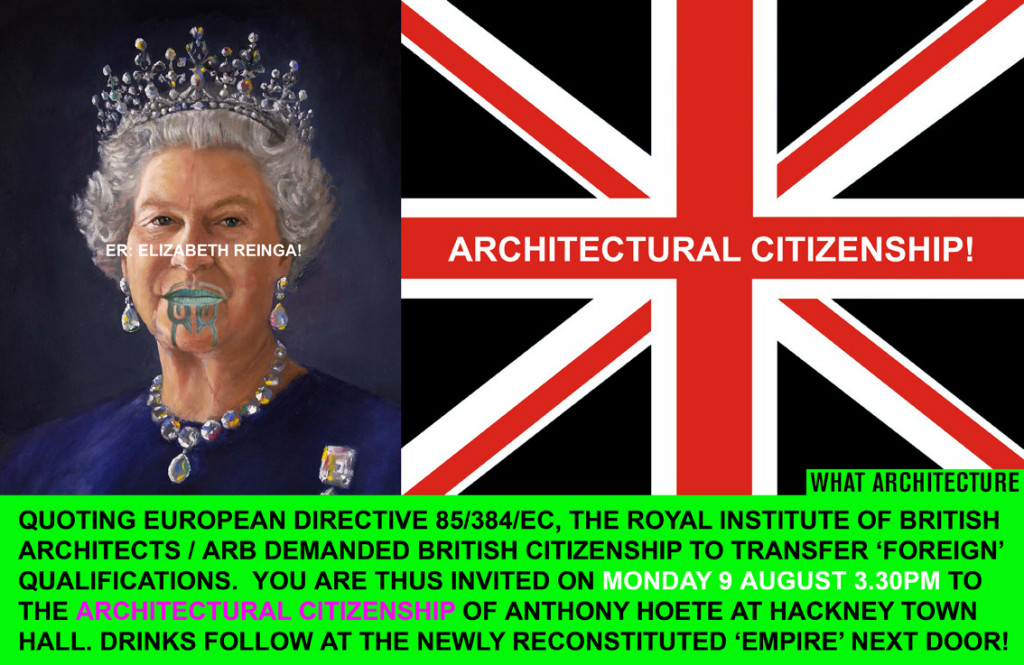
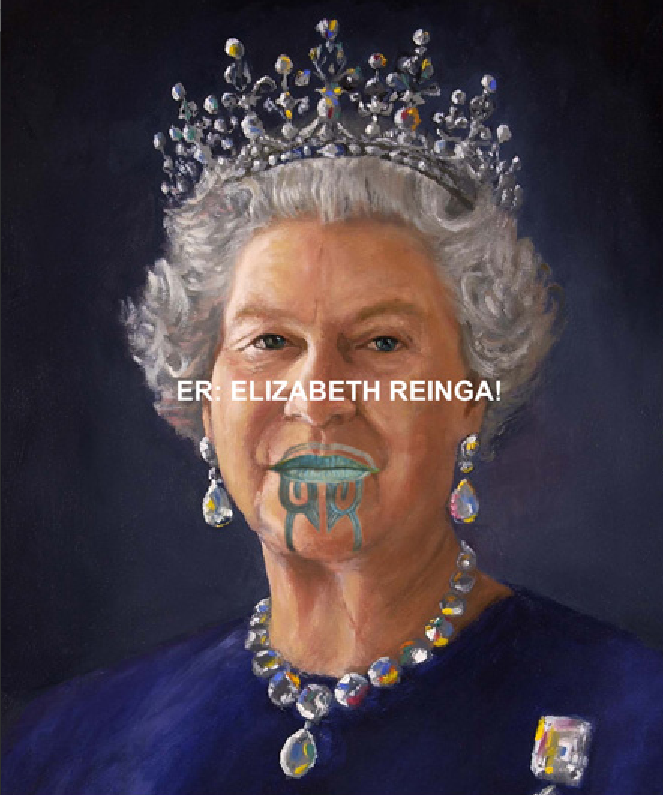



000off_HI-TOP SPIN: A USER POV MODEL FOR TURKMENISTAN
Sometimes ideas come from the strangest places. In this case the connection between a Nike hi-top and our Turkmenistan Merry-Go-Round was not immediate to anyone besides WHAT_ricardo. Spin-videography of the 3D printed model using such basic tools such as our office microwave allows for new ways of understanding the project… genius!
